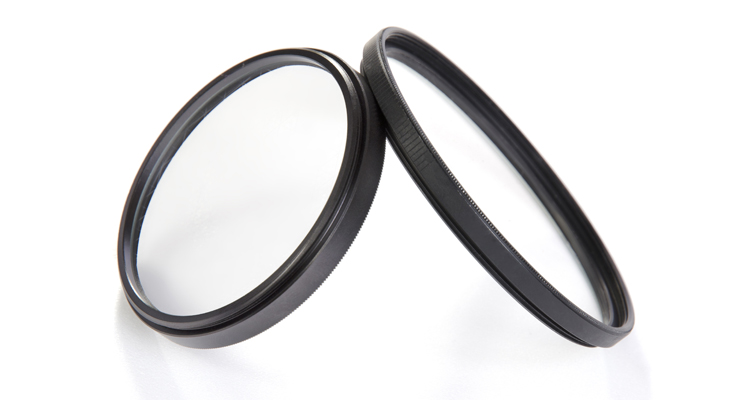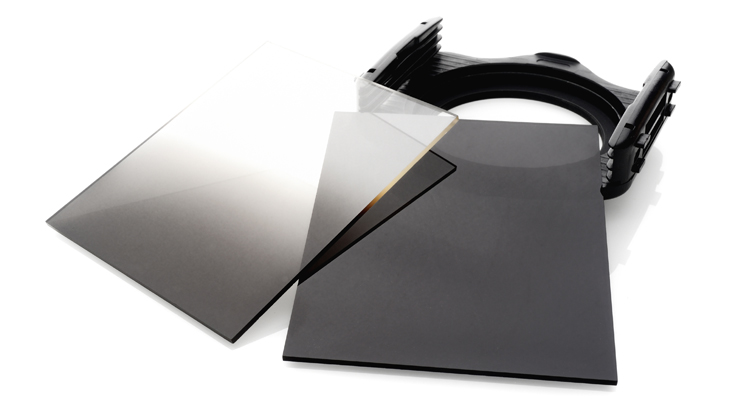Filters have become an essential accessory for photographers and filmmakers, ranging from polarizers to neutral density and everything in between. Filters can improve your images by enhancing colours, minimizing glare, or reducing the amount of light entering your lens. Even a low-cost filter can provide benefits, such as protecting the lens’s front element.
Nonetheless, numerous filter sizes are available, including circular, 4×4 (square), and 4×5.65 (rectangular). Which one is the best fit for you? In this discussion, we will delve into the different size options presently accessible in the market and the decisions you need to make.
Circular Screw-on Filters

Circular filters are the most common type of filter available for camera lenses. They come in a range of sizes to fit different lens thread sizes. A lens thread size refers to the diameter of the threads on the front of a camera lens, where filters or other lens attachments can be screwed on.
If a particular filter size is the only one available when shopping, you can use step-up or step-down rings to adapt the filter to various lens sizes. This approach saves money and removes the necessity to purchase multiple copies of the same filter. However, step-down rings may cause vignetting, depending on the filter’s size relative to your lens.
Regarding pricing, smaller-sized circular filters are generally less expensive than larger ones due to the amount of glass required to cover the front element of your lens. However, some smaller filters can still be pricey due to their popularity or unique properties, such as the 1/4 Tiffen Black Pro-Mist filter, which can add a soft, hazy effect to your images.
At a minimum, every photographer should have a polarizing, ND, and UV filter in their kit. Creative filters like a kaleidoscope or star filters can also add unique and exciting effects to your images. It’s a good idea to store your circular filters in a pouch or wallet to protect them from scratches or damage.
Pros and Cons of Circular Screw-on Filters
Pros of Circular Lens Filters:
- Easy mounting
- Compact size
- Greater durability
- Simplified use with screw-on mechanism
- Ability to stack filters for various effects
Cons of Circular Lens Filters:
- Diameter-specific, requiring step-up rings for interchangeability
- Need to unscrew when switching between lenses
- Potential difficulty in unscrewing, especially in cold temperatures
- Stacking may cause vignetting or other issues
4 x 4 Filters

Upgrading from screw-on filters, 4×4 filters are tailored for hobbyists, freelancers, and professionals. These filters provide greater ease of use than screw-on filters, which can be time-consuming when changing on set or during fast-paced adjustments. However, they require additional accessories like a filter holder and a protective filter pouch.
4×4 square filters effortlessly slide into a filter holder system, which is mounted to a custom-designed step-up ring that supports the holder. Although these filters are significantly more expensive than screw-on filters, they make layering multiple filters a breeze.
One of the key advantages of 4×4 filters is their user-friendliness, excellent build quality, advanced coatings, and the “buy once” concept. Their generic size ensures compatibility with any holder system on the market. When you acquire a new lens, you only need to purchase a new step-up ring for your filter holder, saving money in the long run.
Numerous brands offer premium filter kits that include multiple step-up rings, a padded pouch, and a set of filters. Each brand has unique offerings, so researching before buying to find the perfect match is crucial. Moreover, 4×4 filters are customizable, allowing for various filter combinations to suit your photography or filmmaking needs, making them a smart investment for committed photographers or filmmakers.
Square filters often provide a broader selection of effect options, such as graduated neutral density (grad ND) filters. These filters enable you to refine your images by balancing sky and foreground exposure. This added versatility makes square filters appealing to photographers and filmmakers seeking to broaden their creative horizons and achieve professional results under various lighting conditions.
4 x 5.65 Filters

4×5.65mm filters are the gold standard for high-end professional filmmaking, perfectly suited for matte box attachments from companies like Bright Tangerine. These filters offer extra length compared to 4×4 filters, making them ideal for the wide-screen format.
The 4×5.65 filters boast exceptional quality and craftsmanship, covering almost all cinema zooms and primes. These filters are designed for professional video/film use and carry a hefty price tag due to the “professional tax.” A single filter can cost significantly more than expected, but they tend to hold its resale value a lot better than circular filters.
Remember that 4×5.65 filters necessitate specialized gear like a matte box, further adding to the cost. They cater to professional filmmakers seeking top-quality and precision, not hobbyists or casual photographers. A quality matte box and pro-mist filter could equal the price of a mid-range mirrorless camera.
In conclusion, 4×5.65 filters are a worthwhile investment for professionals needing high-calibre equipment to achieve their goals. Although costly, their unparalleled quality and precision significantly impact the success of film projects.
Pros and Cons of Square and Rectangular Filters
Pros:
- Ease of use with filter holder
- Multiple slots for simultaneous filter use
- Interchangeable for use with other lenses
- No vignetting issues
- Greater creative control
Cons:
- Bulkier than circular filters
- More fragile, prone to breakage if dropped
- Need to carry extra equipment (e.g., filter holder, filter pouch)
- Higher cost (one 4×5.65mm filter can cost as much as several circular filters)
Conclusion
For beginners, investing in good-quality screw-on filters is an excellent way to learn about filters and improve image quality. 4×4 filters offer better quality and ease of use but at a higher price, making them suitable for those investing in equipment and working with various lenses. For top-of-the-line cinematic setups, 4×5.65 filters provide the best quality and are favoured by professionals.
Your filter choice depends on your budget, work type, and quality requirements. Both beginners and professionals can find suitable filter options to enhance their work.
For more on gear, check out these articles:

